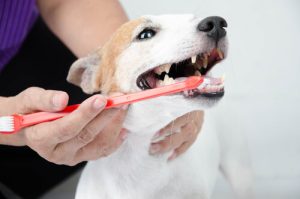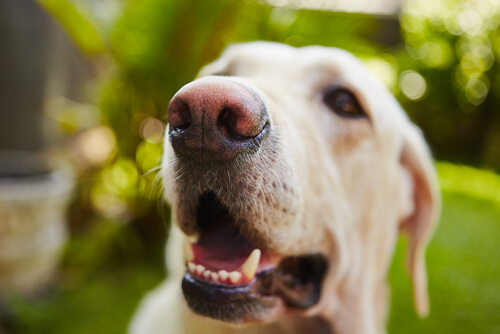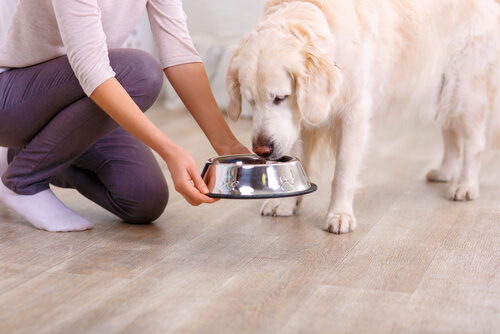How to Prevent Bad Breath in Dogs

Canine bad breath is a very common problem. The animal barely opens his mouth, and an unbearable foul smell overcomes us. In this article we are going to give you some advice to prevent bad breath in dogs.
Why do dogs get bad breath?
When the animal has an unpleasant smell in his mouth, it could be because of a health problem (for example, diabetes or kidney diseases), a dental problem, or a hygiene problem. Veterinarians say that four out of five dogs have dental diseases from 3 years of age.
The main reason for bad breath in dogs is the accumulation of bacteria that transforms into plaque. That’s right, the same thing can happen with people. If that plaque is not removed, the saliva will solidify it and form plaque deposits. This could cause gingivitis, a condition where the gums get inflamed and bleed.

And there’s more, it becomes periodontitis when gingivitis is aggravated. This disease includes loss of the tissue that keeps the teeth “connected” to the gums. The result is a very painful illness with infections and loss of teeth, molars, and incisors.
If the animal opens his mouth and the unpleasant smell is slightly detected, then we still have time to prevent serious diseases. But, if the foul breath continues in spite of proper care and hygiene, then you should take him to the veterinarian to rule out any disorder in the liver, kidneys, or stomach.
Tips to eliminate bad breath in dogs
Basically, we can reduce canine bad breath through hygiene (brushing his teeth), diet, and healthy habits:
1. Brush his teeth periodically
The majority of pets are not oral hygiene lovers because it either hurts them or because they don’t understand what that object is that we put inside their mouths. However, we must have a lot of patience and brush several times a week. You can buy special toothbrushes in pet stores. Or if not, we can use a child’s toothbrush (that has not been used in order to prevent spreading bacteria).
Furthermore, we suggest getting toothpaste for dogs, since the kind that people use has fluoride, a toxic component for animals. The cleaning is very important, and it would be ideal to teach him that it’s a good habit when he’s a puppy.
It’s up to the owner to let the dog know that it’s a game and not a punishment. In the case that the animal gets very nervous or wants to bite you, maybe you should take him to the veterinarian or a specialist so that they can thoroughly brush his teeth once a month.
2. Give him dry food
Food is closely related to bad breath in dogs. Since he doesn’t brush his teeth after eating, we have to give him food that will do that for him. The best option is dry food. This polishes the teeth and reduces the unpleasant smell in the animal’s mouth. Don’t forget to leave him a bowl full of water for when he finishes eating. That way, while he is getting hydrated, he is also rinsing out his mouth.
Another trick related to food and bad breath: give him fruits or vegetables that clean his teeth, such as raw carrots or apples. These veggies eliminate bacterial plaque, and make teeth and gums healthy at the same time. Ask your veterinarian if he can eat them.

3. Give him certain toys
The next time that he behaves as you wish, give him a present: a plastic chew toy or a treat (cookies, bones to gnaw, etc). While he is chewing it, he will be cleaning his mouth, generating saliva and polishing his teeth. The ideal toys are made of natural rubber or nylon.
Remember that bad breath in dogs is related with the animal’s habits and care.
This text is provided for informational purposes only and does not replace consultation with a professional. If in doubt, consult your specialist.